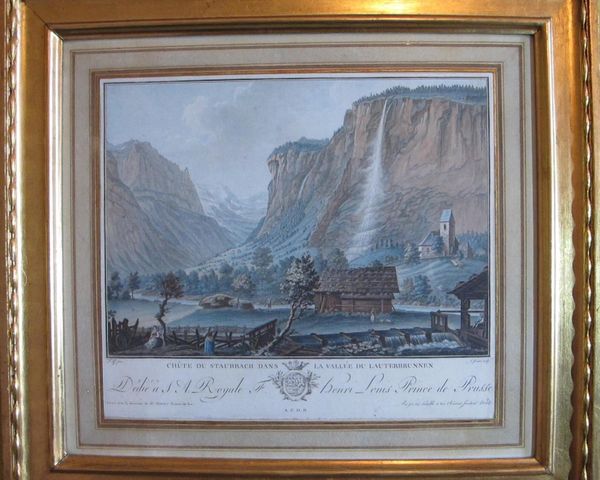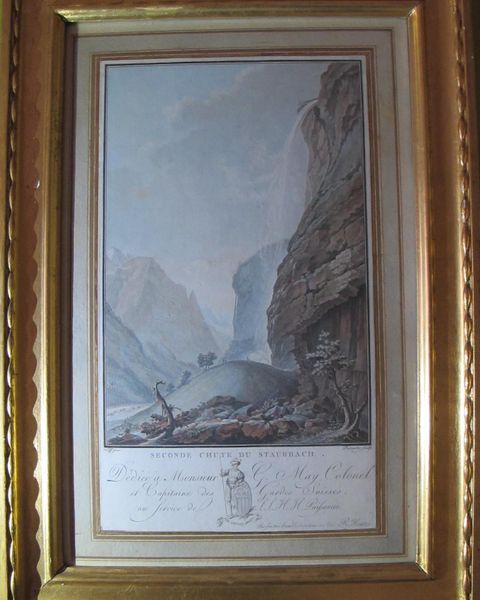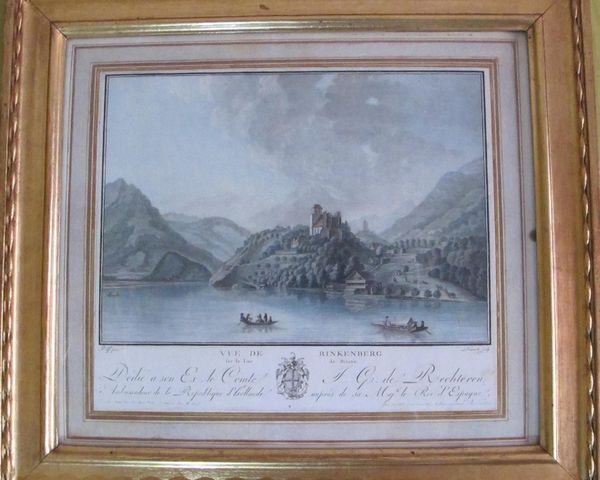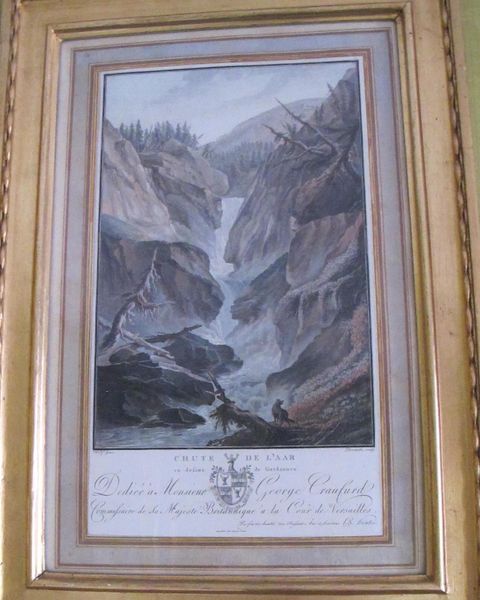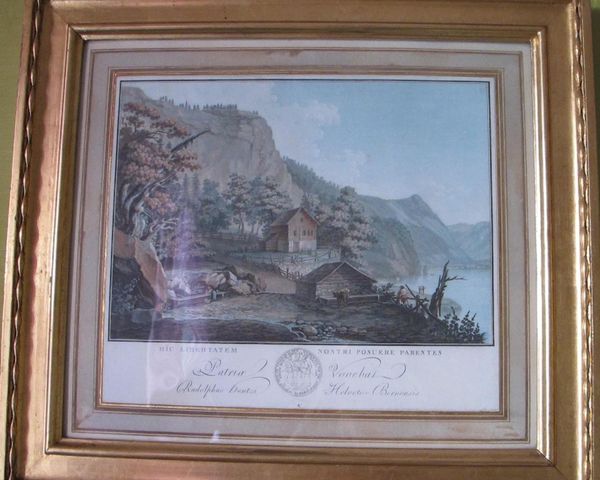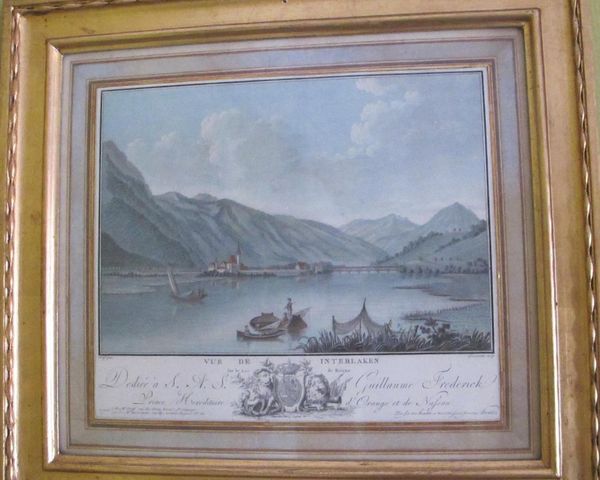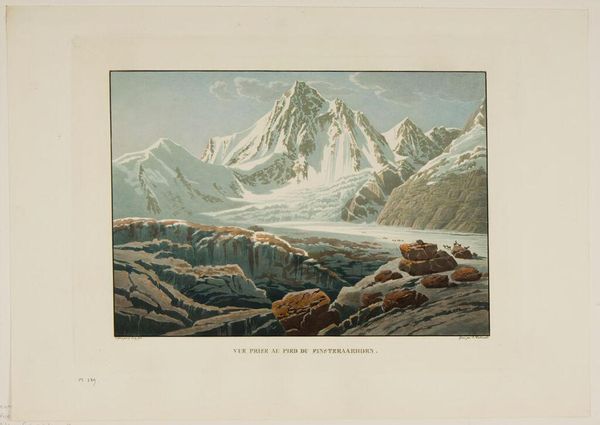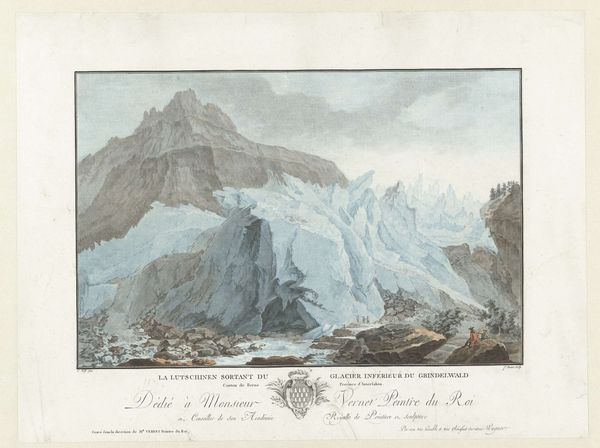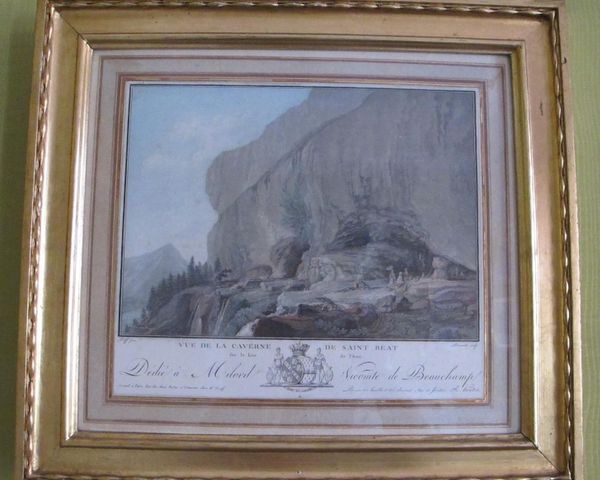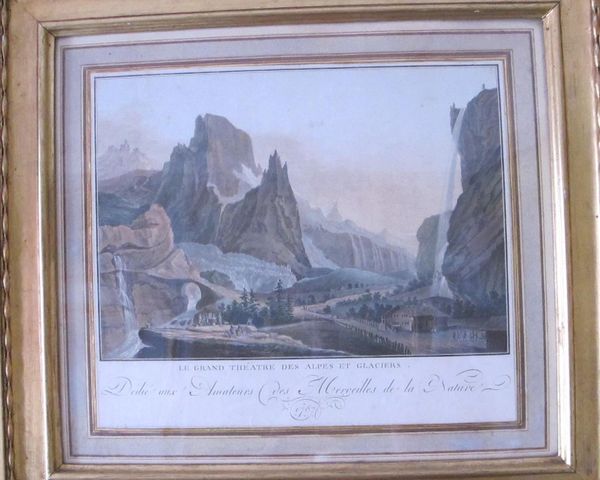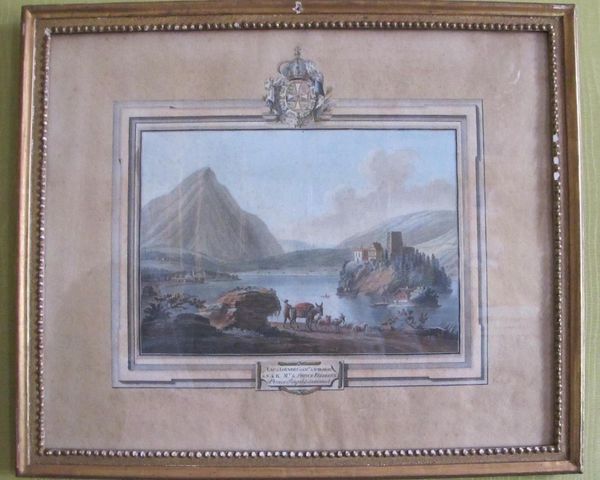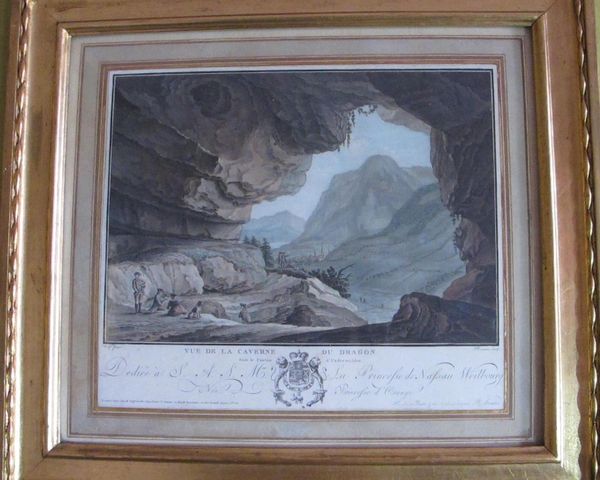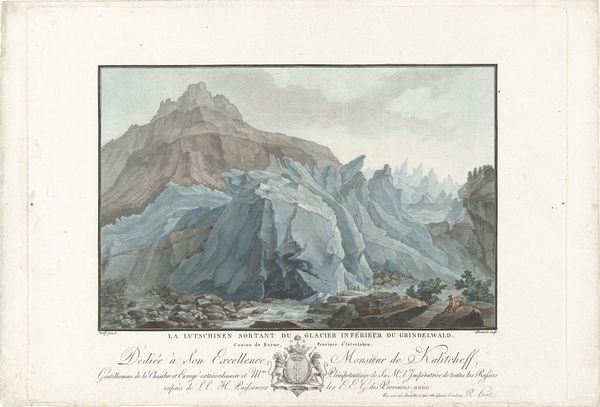
'Vue du Gross-Horn et du Breit-Horn avec le Petit Lac D'Ober-Horn' 18th century
0:00
0:00
aquatint, print
#
aquatint
#
abstract painting
#
water colours
# print
#
impressionist landscape
#
possibly oil pastel
#
handmade artwork painting
#
oil painting
#
acrylic on canvas
#
underpainting
#
painting painterly
#
watercolor
Dimensions: 290 mm (height) x 335 mm (width) (bladmaal)
Curator: Let's delve into this aquatint, “Vue du Gross-Horn et du Breit-Horn avec le Petit Lac D'Ober-Horn” from the 18th century, crafted by Caspar Wolf. Editor: It's stunning! The mountain range dominates, and I’m struck by the stark contrast between the imposing peaks and the almost pastoral scene at the base with figures and a dog. What do you see when you look at this piece? Curator: I see the beginnings of a shift in how we view nature. Before this, mountainous landscapes were often seen as terrifying, a symbol of chaos. What Wolf is doing here, by depicting the Gross-Horn and Breit-Horn, is participating in the cultural project of aestheticizing the sublime. This isn't just about pretty scenery; it's about the taming, or at least the visual conquering, of previously unconquerable, and often, unvisitable spaces. Note the figures in the foreground – their presence serves as a marker of human dominion and scientific observation. Consider how the print medium itself—relatively accessible—contributes to a broader dissemination of this newly cultivated appreciation for the sublime landscape. Editor: That's a perspective I hadn’t considered. So, the figures aren’t just “there,” but are making a statement about humankind's relationship with nature during that era. Does the aquatint medium factor into that reading as well? Curator: Absolutely! The aquatint, allowing for subtle gradations of tone, creates a sense of depth and atmosphere crucial for conveying the sublime experience. Also, by producing prints, Wolf made these landscapes available to a broader public, influencing how they perceived and valued the natural world. Think about the market for such prints at the time. Who was buying them, and what did these images signify to them? Editor: It’s fascinating how an image like this reveals layers of social and cultural meaning beyond its literal representation. Curator: Precisely! It showcases how art actively shapes our perception and interacts with evolving ideas around nature, science, and social class. It encourages us to reflect on how the sublime becomes a carefully constructed visual product tied to a specific historical context. Editor: I'm leaving this discussion with much more to consider than just pretty scenery. Curator: And I'm reminded of the power of visual media to shape not just aesthetic taste but also cultural values and perceptions of our place within the larger world.
Comments
No comments
Be the first to comment and join the conversation on the ultimate creative platform.

